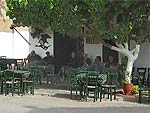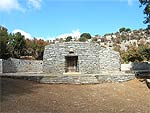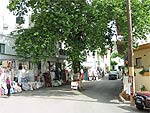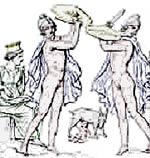
As early as at the end of the Venetian period (1583) the village had 911 registered inhabitants. Around 2300 people live there today.
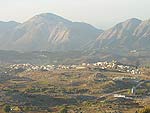
The local dialect is still strongly characterized by the antique Dorian dialect, and some of the men still wear the traditional headscarf, mantíli, and the strong leather boots, stivánia.
An annually event is the Yakinthia Festival that takes place at the beginning of July. The festival is a development of the musical festival instituted in 1979 by the composer Manos Chatzidakis and the then mayor of Anogia, Georgios Klados. In 1998 the Anogian musician Loudovikos introduced that every festival must furthermore have a specific theme. The various arrangements take place partly at the Agios Yakinthos church in the mountains and partly in Anogia.
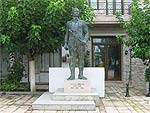
The present Anogia has been rebuilt after the total destruction during World War II by the Germans as a punishment, because the Resistance had taken the German general Kreipe prisoner there, before he was removed from Crete. On August 13th 1944 two German battalions surrounded Anogia. They took 50 hostages, looted the village and brought their loot back to Iraklion. The destruction of the village continued until September 5th. A total of 26 men and 11 women were shot and almost the whole city was burnt down. Only a few houses and the Agios Ioannis church in the square were not consumed by fire. The town hall has a memorial tablet with the German order of the destruction of the village:
Since Anogia is the centre of the English espionage in Crete; since the inhabitants of Anogia committed the murder of the commander of Gení-Gavé and the garrison he was the leader of; since the inhabitants of Anogia sabotaged Damasta; since the various resistance groups were given asylum and security in Anogia; and since general von Kreipe's kidnappers passed by and used Anogia as a transit camp, we command that the village must be totally destroyed, and that every man found in Anogia or within a distance of one kilometre must be executed.
Chania,
13-8-44
Chief
commander of Crete
H. Müller
Because of the destruction of the village, many families lost their possibility of making a living and therefore the women turned to homemade crafts, which quickly became a predominant economic factor. Today the hand-woven textiles and woollen carpets are widely famous. The items are sold in the numerous shops of the village, or they are exported to the tourist towns along the north coast.
